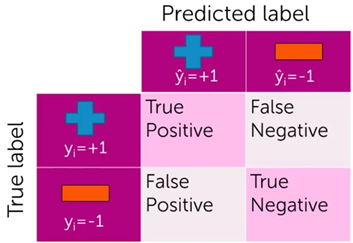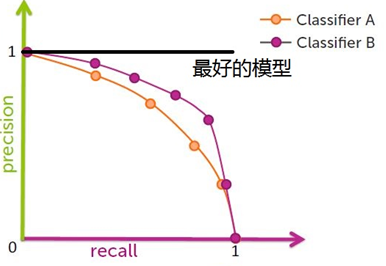from transformers import AutoModelForTokenClassification, AutoTokenizer, DataCollatorForTokenClassification
from transformers import TrainingArguments, Trainer
import evaluate
from datasets import load_dataset
import numpy as np
from seqeval.metrics import classification_report, f1_score, precision_score, recall_score
import torch
import os
import json
import logging
from collections import Counter
from sklearn.utils.class_weight import compute_class_weight
import matplotlib.pyplot as plt
# 设置详细日志
logging.basicConfig(level=logging.INFO, format='%(asctime)s - %(levelname)s - %(message)s')
logger = logging.getLogger(__name__)
# 设置设备
device = torch.device("cuda" if torch.cuda.is_available() else "cpu")
logger.info(f"Using device: {device}")
# 模型路径
model_dir = 'C:/Users/admin/.cache/modelscope/hub/tiansz/bert-base-chinese'
# 加载tokenizer
tokenizer = AutoTokenizer.from_pretrained(model_dir)
logger.info("Tokenizer加载完成")
# 加载数据集
path = r'C:\Users\admin\八斗学院学习笔记\练习\week11_codes\data'
dataset = load_dataset(path)
logger.info(f"数据集加载完成: {dataset}")
# 提取所有实体标签
labels = set()
for row in dataset['train']:
for ent in row['entities']:
labels.add(ent['label'])
# 创建完整的标签列表(包含B-和I-前缀)
entities = sorted(list(labels)) # 排序确保一致性
tags = ['O']
for ent in entities:
tags.append('B-' + ent.upper())
tags.append('I-' + ent.upper())
# 创建标签到ID的映射
tag2id = {tag: i for i, tag in enumerate(tags)}
id2tag = {i: tag for i, tag in enumerate(tags)}
logger.info(f"标签数量: {len(tags)}")
logger.info(f"标签列表: {tags}")
# 保存标签映射
os.makedirs('label_mappings', exist_ok=True)
with open('label_mappings/tag2id.json', 'w', encoding='utf-8') as f:
json.dump(tag2id, f, ensure_ascii=False, indent=2)
with open('label_mappings/id2tag.json', 'w', encoding='utf-8') as f:
json.dump(id2tag, f, ensure_ascii=False, indent=2)
logger.info("标签映射已保存到 label_mappings 目录")
# 实体处理函数(修复版)- 确保标签正确性
def entities_proc(items):
text = items['text']
items_len = len(text)
ent_tags = ['O'] * items_len # 初始化为'O'
entities = items['entities']
for ent in entities:
start = ent['start_offset']
end = ent['end_offset']
label = ent['label'].upper() # 统一转换为大写
# 确保位置在范围内
if start < items_len:
# 设置B-标签
ent_tags[start] = f'B-{label}'
# 设置I-标签(如果有多个字符)
for pos in range(start + 1, min(end, items_len)):
ent_tags[pos] = f'I-{label}'
# 转换为ID(遇到未知标签默认为'O')
tag_ids = [tag2id.get(tag, tag2id['O']) for tag in ent_tags]
return {'ent_tags': tag_ids}
# 应用实体处理
logger.info("处理实体标签...")
ds = dataset.map(entities_proc)
# 分析标签分布
def analyze_label_distribution(dataset, split):
logger.info(f"\n分析 {split} 标签分布...")
all_labels = []
for example in dataset[split]:
all_labels.extend([id2tag.get(tag_id, 'O') for tag_id in example['ent_tags']])
label_counts = Counter(all_labels)
total_labels = len(all_labels)
logger.info(f"总标签数: {total_labels}")
for label, count in label_counts.items():
percentage = (count / total_labels) * 100
logger.info(f"{label}: {count} ({percentage:.2f}%)")
# 计算实体标签的比例
entity_labels = [label for label in label_counts.keys() if label != 'O']
entity_count = sum([label_counts[label] for label in entity_labels])
entity_percentage = (entity_count / total_labels) * 100
logger.info(f"实体标签总数: {entity_count} ({entity_percentage:.2f}%)")
logger.info(f"非实体标签(O): {label_counts['O']} ({100-entity_percentage:.2f}%)")
# 可视化标签分布
plt.figure(figsize=(12, 6))
labels_list = list(label_counts.keys())
counts = [label_counts[l] for l in labels_list]
plt.bar(labels_list, counts)
plt.xticks(rotation=90)
plt.title(f'{split} 标签分布')
plt.ylabel('数量')
plt.tight_layout()
plt.savefig(f'label_distribution_{split}.png')
logger.info(f"标签分布图已保存为 label_distribution_{split}.png")
return label_counts
# 分析标签分布
train_label_counts = analyze_label_distribution(ds, 'train')
test_label_counts = analyze_label_distribution(ds, 'test')
# 计算类别权重解决不平衡问题
logger.info("\n计算类别权重解决不平衡问题...")
all_train_labels = []
for example in ds['train']:
all_train_labels.extend(example['ent_tags'])
# 计算类别权重
class_weights = compute_class_weight(
class_weight='balanced',
classes=np.unique(all_train_labels),
y=all_train_labels
)
class_weights = torch.tensor(class_weights, dtype=torch.float32).to(device)
# 增强实体标签的权重
for i, tag in enumerate(tags):
if tag != 'O':
class_weights[i] *= 5.0 # 增加实体标签的权重
logger.info(f"类别权重: {class_weights}")
# 数据输入处理函数(修复版 - 使用offset_mapping)
def data_input_proc(items):
# 获取文本列表
texts = items['text']
# 分词(启用offset_mapping)
tokenized_inputs = tokenizer(
texts,
truncation=True,
padding=True,
max_length=128,
return_offsets_mapping=True,
is_split_into_words=False,
return_tensors="pt",
)
# 获取偏移量映射
offset_mappings = tokenized_inputs.pop('offset_mapping')
all_labels = []
for i, text in enumerate(texts):
# 获取字符级标签ID列表
char_tags = items['ent_tags'][i]
label_ids = []
offsets = offset_mappings[i]
for j, offset in enumerate(offsets):
start, end = offset
# 特殊token ([CLS], [SEP], [PAD]) 设置为-100
if start == 0 and end == 0:
label_ids.append(-100)
else:
# 取起始位置对应的字符标签
if start < len(char_tags):
label_ids.append(char_tags[start])
else:
# 处理截断情况
label_ids.append(-100)
all_labels.append(label_ids)
tokenized_inputs["labels"] = all_labels
return tokenized_inputs
# 应用输入处理
logger.info("处理输入数据...")
ds1 = ds.map(
data_input_proc,
batched=True,
batch_size=8,
remove_columns=ds["train"].column_names
)
# 训练参数
args = TrainingArguments(
output_dir='ner_train',
num_train_epochs=3,
per_device_train_batch_size=4,
per_device_eval_batch_size=8,
evaluation_strategy="epoch",
save_strategy="epoch",
logging_strategy="epoch",
load_best_model_at_end=False, # 暂时禁用,直到我们解决指标问题
report_to='tensorboard',
logging_dir='ner_train/logs',
save_total_limit=2,
learning_rate=5e-5,
weight_decay=0.01,
overwrite_output_dir=True,
warmup_ratio=0.1,
gradient_accumulation_steps=4,
fp16=torch.cuda.is_available(),
logging_steps=20,
remove_unused_columns=False,
# 暂时不使用 metric_for_best_model
)
# 创建带类别权重的自定义损失函数
class WeightedLossModel(torch.nn.Module):
def __init__(self, model, class_weights):
super().__init__()
self.model = model
self.class_weights = class_weights
self.loss_fct = torch.nn.CrossEntropyLoss(weight=class_weights, ignore_index=-100)
def forward(self, **inputs):
outputs = self.model(**inputs)
logits = outputs.logits
if "labels" in inputs:
loss = self.loss_fct(logits.view(-1, self.model.config.num_labels), inputs["labels"].view(-1))
outputs.loss = loss
return outputs
# 加载基础模型
logger.info("加载基础模型...")
base_model = AutoModelForTokenClassification.from_pretrained(
model_dir,
num_labels=len(tags),
id2label=id2tag,
label2id=tag2id,
ignore_mismatched_sizes=True
).to(device)
# 创建带权重的模型
model = WeightedLossModel(base_model, class_weights).to(device)
logger.info(f"模型结构: 带类别权重的{base_model.__class__.__name__}")
logger.info(f"模型参数量: {sum(p.numel() for p in model.parameters()):,}")
# 数据收集器
data_collator = DataCollatorForTokenClassification(tokenizer=tokenizer)
# 评估指标计算函数(增强调试版)
def compute_metrics(p):
try:
# 确保输入格式正确
if hasattr(p, "predictions") and hasattr(p, "label_ids"):
predictions = p.predictions
labels = p.label_ids
elif isinstance(p, tuple) and len(p) == 2:
predictions, labels = p
else:
logger.error(f"无法识别的输入格式: {type(p)}")
return {"f1": 0.0, "precision": 0.0, "recall": 0.0, "accuracy": 0.0}
# 确保预测结果有正确的形状
if predictions.ndim == 3:
predictions = np.argmax(predictions, axis=2)
# 移除忽略的索引(-100)
true_predictions = []
true_labels = []
for i in range(len(predictions)):
preds = []
lbls = []
for j in range(len(predictions[i])):
if labels[i][j] != -100:
preds.append(id2tag[predictions[i][j]])
lbls.append(id2tag[labels[i][j]])
true_predictions.append(preds)
true_labels.append(lbls)
# 计算指标
precision = 0.0
recall = 0.0
f1 = 0.0
accuracy = 0.0
if true_labels and any(true_labels): # 确保标签列表非空
try:
precision = precision_score(true_labels, true_predictions, zero_division=0)
recall = recall_score(true_labels, true_predictions, zero_division=0)
f1 = f1_score(true_labels, true_predictions, zero_division=0)
# 计算准确率(token级别)
total = 0
correct = 0
for preds, lbls in zip(true_predictions, true_labels):
for p, l in zip(preds, lbls):
total += 1
if p == l:
correct += 1
accuracy = correct / total if total > 0 else 0.0
# 生成分类报告
report = classification_report(true_labels, true_predictions, output_dict=True, zero_division=0)
# 记录实体标签的性能
logger.info("\n===== 详细分类报告 =====")
for tag in tags:
if tag in report and tag != 'O':
logger.info(f"{tag}: P={report[tag]['precision']:.4f}, R={report[tag]['recall']:.4f}, F1={report[tag]['f1-score']:.4f}")
# 记录前10个预测和标签
logger.info("\n===== 样本预测检查 =====")
for i in range(min(3, len(true_labels))):
logger.info(f"样本 {i} 预测: {' '.join(true_predictions[i][:20])}")
logger.info(f"样本 {i} 标签: {' '.join(true_labels[i][:20])}")
logger.info("")
# 计算并记录非O标签的准确率
non_o_correct = 0
non_o_total = 0
for preds, lbls in zip(true_predictions, true_labels):
for p, l in zip(preds, lbls):
if l != 'O':
non_o_total += 1
if p == l:
non_o_correct += 1
non_o_accuracy = non_o_correct / non_o_total if non_o_total > 0 else 0.0
logger.info(f"非O标签准确率: {non_o_accuracy:.4f} ({non_o_correct}/{non_o_total})")
except Exception as inner_e:
logger.error(f"计算评估指标时出错: {inner_e}")
logger.error(f"预测形状: {predictions.shape}")
logger.error(f"标签形状: {labels.shape}")
logger.error(f"true_labels长度: {len(true_labels)}")
logger.error(f"true_labels内容示例: {true_labels[:1] if true_labels else '空'}")
else:
logger.warning("评估时没有有效标签!")
return {
"f1": f1,
"precision": precision,
"recall": recall,
"accuracy": accuracy
}
except Exception as outer_e:
logger.error(f"compute_metrics函数发生严重错误: {outer_e}")
return {
"f1": 0.0,
"precision": 0.0,
"recall": 0.0,
"accuracy": 0.0
}
# 创建Trainer
trainer = Trainer(
model=model,
args=args,
train_dataset=ds1['train'],
eval_dataset=ds1['test'],
data_collator=data_collator,
compute_metrics=compute_metrics,
tokenizer=tokenizer
)
# 预评估测试
logger.info("进行预评估测试...")
try:
eval_result = trainer.evaluate()
logger.info(f"预评估结果: {eval_result}")
# 检查是否返回了我们的指标
if "eval_f1" in eval_result:
logger.info("评估指标计算成功!")
# 重新启用最佳模型保存
args.load_best_model_at_end = True
args.metric_for_best_model = "f1" # 使用基础名称,Trainer会自动添加"eval_"前缀
trainer = Trainer(
model=model,
args=args,
train_dataset=ds1['train'],
eval_dataset=ds1['test'],
data_collator=data_collator,
compute_metrics=compute_metrics,
tokenizer=tokenizer
)
else:
logger.warning("评估指标未返回,将禁用最佳模型保存功能")
except Exception as e:
logger.error(f"预评估失败: {e}")
# 训练模型
logger.info("开始训练...")
try:
train_result = trainer.train()
logger.info("训练完成!")
except Exception as e:
logger.error(f"训练失败: {e}")
# 尝试更小的学习率
logger.info("尝试更小的学习率...")
args.learning_rate = 1e-5
trainer = Trainer(
model=model,
args=args,
train_dataset=ds1['train'],
eval_dataset=ds1['test'],
data_collator=data_collator,
compute_metrics=compute_metrics,
tokenizer=tokenizer
)
train_result = trainer.train()
logger.info("训练完成!")
# 保存最终模型
trainer.save_model("final_ner_model")
logger.info("最终模型已保存到 final_ner_model 目录")
# 训练完成后评估模型
logger.info("\n===== 最终评估结果 =====")
try:
eval_results = trainer.evaluate(ds1['test'])
logger.info(f"验证集准确率: {eval_results.get('eval_accuracy', 0.0):.4f}")
logger.info(f"验证集精确率: {eval_results.get('eval_precision', 0.0):.4f}")
logger.info(f"验证集召回率: {eval_results.get('eval_recall', 0.0):.4f}")
logger.info(f"验证集F1值: {eval_results.get('eval_f1', 0.0):.4f}")
# 打印所有可用的评估指标
logger.info("\n所有可用评估指标:")
for key, value in eval_results.items():
logger.info(f"{key}: {value}")
except Exception as e:
logger.error(f"最终评估失败: {e}")
# 绘制训练损失曲线
def plot_training_history(history):
try:
train_loss = [log['loss'] for log in history if 'loss' in log]
eval_loss = [log['eval_loss'] for log in history if 'eval_loss' in log]
if not train_loss:
logger.warning("没有训练损失数据可绘制")
return
epochs = list(range(1, len(train_loss) + 1))
plt.figure(figsize=(12, 6))
plt.plot(epochs, train_loss, 'b-', label='训练损失')
if eval_loss:
plt.plot(epochs[:len(eval_loss)], eval_loss, 'r-', label='验证损失')
plt.title('训练和验证损失')
plt.xlabel('Epochs')
plt.ylabel('损失')
plt.legend()
plt.grid(True)
plt.savefig('training_loss.png')
logger.info("训练损失图已保存为 training_loss.png")
# 绘制F1分数(如果可用)
eval_f1 = [log['eval_f1'] for log in history if 'eval_f1' in log]
if eval_f1:
plt.figure(figsize=(12, 6))
plt.plot(epochs[:len(eval_f1)], eval_f1, 'g-', label='验证F1')
plt.title('验证F1分数')
plt.xlabel('Epochs')
plt.ylabel('F1分数')
plt.legend()
plt.grid(True)
plt.savefig('eval_f1.png')
logger.info("F1分数图已保存为 eval_f1.png")
except Exception as e:
logger.error(f"绘制训练历史时出错: {e}")
# 绘制训练历史
plot_training_history(trainer.state.log_history)
# 测试模型预测
logger.info("\n测试模型预测...")
sample_texts = [
"我在北京大学学习人工智能",
"马云是阿里巴巴集团的创始人",
"上海市浦东新区张江高科技园区"
]
# 自定义预测函数
def predict_entities(text, model, tokenizer, id2tag, device):
try:
# 分词
inputs = tokenizer(
text,
return_tensors="pt",
return_offsets_mapping=True,
truncation=True,
max_length=128
)
# 移动到设备
input_ids = inputs['input_ids'].to(device)
attention_mask = inputs['attention_mask'].to(device)
token_type_ids = inputs.get('token_type_ids', None)
if token_type_ids is not None:
token_type_ids = token_type_ids.to(device)
offset_mapping = inputs['offset_mapping'].cpu().numpy()[0]
# 预测
model.eval()
with torch.no_grad():
outputs = model(
input_ids=input_ids,
attention_mask=attention_mask,
token_type_ids=token_type_ids
)
# 获取预测结果
logits = outputs.logits
predictions = torch.argmax(logits, dim=-1).cpu().numpy()[0]
# 提取实体
entities = []
current_entity = None
tokens = tokenizer.convert_ids_to_tokens(input_ids[0])
logger.info(f"\n预测文本: {text}")
logger.info(f"Token列表: {tokens}")
for i, (pred, offset) in enumerate(zip(predictions, offset_mapping)):
# 跳过特殊token
if offset[0] == 0 and offset[1] == 0:
continue
tag = id2tag[pred]
logger.info(f"Token {i}: {tokens[i]} -> {tag} (位置: {offset[0]}-{offset[1]})")
# 处理实体
if tag.startswith('B-'):
# 结束前一个实体
if current_entity:
entities.append(current_entity)
# 开始新实体
entity_type = tag[2:]
start = offset[0]
end = offset[1]
current_entity = {
'start': start,
'end': end,
'type': entity_type,
'text': text[start:end]
}
elif tag.startswith('I-'):
# 继续当前实体
if current_entity and current_entity['type'] == tag[2:]:
current_entity['end'] = offset[1]
current_entity['text'] = text[current_entity['start']:offset[1]]
else:
# 如果I标签没有匹配的B标签,则创建新实体
entity_type = tag[2:]
start = offset[0]
end = offset[1]
current_entity = {
'start': start,
'end': end,
'type': entity_type,
'text': text[start:end]
}
else: # O
# 结束前一个实体
if current_entity:
entities.append(current_entity)
current_entity = None
# 添加最后一个实体
if current_entity:
entities.append(current_entity)
return entities
except Exception as e:
logger.error(f"预测过程中出错: {e}")
return []
# 进行预测
for text in sample_texts:
logger.info(f"\n===== 预测文本: {text} =====")
try:
entities = predict_entities(text, model, tokenizer, id2tag, device)
if not entities:
logger.info(" 未识别到实体")
else:
for ent in entities:
logger.info(f" 实体: {ent['text']}, 类型: {ent['type']}, 位置: {ent['start']}-{ent['end']}")
except Exception as e:
logger.error(f"预测文本 '{text}' 时出错: {e}")
logger.info("\nNER任务完成!")这代码都实现了什么还有可以优化的嘛










 本文探讨了机器学习中分类器评估的多种方法,包括accuracy、precision和recall等指标,并讨论了optimistic model与pessimistic model的特点及改进策略。
本文探讨了机器学习中分类器评估的多种方法,包括accuracy、precision和recall等指标,并讨论了optimistic model与pessimistic model的特点及改进策略。
















 201
201

 被折叠的 条评论
为什么被折叠?
被折叠的 条评论
为什么被折叠?








